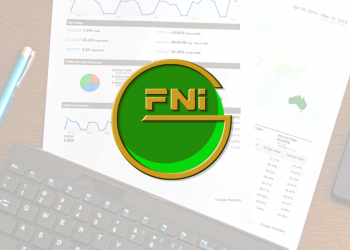Artisanal and Small-scale Gold Mining (ASGM) is a sector in the mining industry that is often overlooked and undervalued as it is usually done in remote areas and beyond the reach of government rules and regulations. It is usually described as a poverty-driven sector as miners tend to work in unideal conditions and circumstances.
Workers in this industry have no fixed wages as their income would depend on the amount of gold they were able to extract that day; thus, struggling to make ends meet. Moreover, with no proper training, heavy-duty equipment, and proper measures to help them, miners tend to be more exposed and more prone to the geohazards of mining. Unfortunately, these workers and their families have little to no access to basic healthcare services; thus, being more susceptible to diseases such as diarrhea and malaria.
Another thing the ASGM sector is at a disadvantage at is the lack of sufficient capital; thus, forcing most artisanal and small-scale gold miners to apply for loans. Whatever profit they make will not only be divided among miners but should also suffice to pay for the loans, the use of mills, and other machinery input.
Despite these challenges artisanal and small-scale miners face, this sector still contributes greatly to the economy.
ASGM has been a part of the mining industry for years and countries such as Africa, Latin America, and Asia still observe such method at present. The Philippines, in particular, has practiced ASGM for many centuries and has continued to do so. According to a study by the International Labour Organization (ILO), 69 small-scale mining areas were documented in the country in 2017.
Globally, the Philippines ranked third in relation to density of gold deposits per square kilometer, with total deposits estimated to approximately five billion metric tonnes, and 19th in terms of gold production, reportedly extracting 41.1 tonnes as of 2015. Additionally, 70 to 80 percent, or approximately 25 to 28 tonnes, were documented to come from ASGM; thus, making the country one of the world’s largest artisanal and small-scale gold producers. However, some question this data because of various issues on smuggling.
It has also provided employment opportunities to almost 500,000 Filipinos in more than 40 provinces, benefiting approximately two million Filipinos from marginalized sectors, including indigenous peoples, women, and even children. It was documented that the ASGM sector provided economic benefits to as many as 2.9 million people nationwide.
However, despite these contributions, artisanal and small-scale mining is still viewed in a bad light by the government as it has issues in the proper and legal way of operating. Some national policies are poorly designed and unresponsive to the development agenda of ASGM communities and, oftentimes, favor large-scale mining over the artisanal and small-scale sector; thus, many small-scale miners are driven to operate informally.
The ASGM sector has been delegated to city and provincial governments thru Republic Act (R.A.) 7076, likewise known as the “People’s Small-scale Mining Act of 1991”, and the Local Government Code of 1991.
The government acknowledges ASGM only under the jurisdiction of the “Minahang Bayan,” and per R.A. 7076, the issuance of mining permits and licenses, and the establishment of a Minahang Bayan shall be the responsibility of the City or the Provincial Mining Regulatory Board.
Moreover, among other provisions, artisanal and small-scale miners should not only voluntarily form a cooperative to engage in the extraction of minerals or ore-bearing materials from the ground but should also strictly observe the allowed scope and limitations of ASGM operations — that is, 20 hectares per permit and the extraction of up to 50,000 metric tonnes of ore annually.
According to a recent report, there are 29 approved Minahang Bayan nationwide. Moreover, in a bid to legalize artisanal and small-scale mining in the Philippines, the government targets to approve at least 40 Minahang Bayan applications per year and approve at least 150 Minahang Bayan applications by 2022.
The lack of formal recognition and support from the government has led to the challenges faced not only of the artisanal and small-scale miners, themselves, but also of the ASGM sector as a whole; thus, the call to formalize this industry should be strengthened, possible through legalization of the industry, acknowledgement and support from the national government, and allocation of benefits that will help improve mining operations.
This sector is recognized by the world’s major development organizations to have the capacity to improve people’s lives, contribute to the country’s overall economic and environmental conditions, and push forth rural development to improve lives in large, rural areas in the country.
Source:














